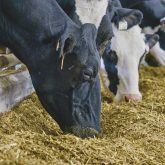In a move expected to provide $95 million in additional farm support per year, Canada’s ag ministers have agreed to remove the reference margin limit from the AgriStability farm income stabilization program.
“That’s it! The ‘reference margin limit’ of the #AgriStability program is over! And it will be retroactive to 2020!” federal Agriculture Minister Marie-Claude Bibeau wrote Thursday on Facebook following a virtual meeting between her and her provincial and territorial counterparts.
“That’s about $95 million more per year for [Canadian] farmers who will suffer significant losses for reasons beyond their control.”
Read Also

ICE Weekly: No upside for canola if China situation continues: trader
Tony Tryhuk of RBC Dominion Securities said canola should stay rangebound if Canada’s trade war with China continues.
On Twitter, Bibeau said she now has “support from all our prov(incial) + territorial colleagues” on the RML’s removal, and also thanked farmers and producer groups “who got behind our offer.”
Bibeau had gone public March 17 to encourage her provincial counterparts to commit either way on changes she proposed last November for the program — including not just the RML’s removal but a plan to increase the program’s compensation rate to 80 per cent, up from the current 70.
Bibeau had specifically aimed to get support from the Prairie provinces “to build a strong consensus” for her proposed changes, with pledges for further discussion later on longer-term changes to the program. The provinces foot 40 per cent of the bill for AgriStability and other federal/provincial business risk management (BRM) programs.
Making both changes in time for retroactive application to 2020 was expected to be a pricey proposition for the Prairie provinces in particular, increasing the total expected payout to Canadian farmers by up to 50 per cent, or $170 million per year.
On Twitter Thursday, Bibeau said the federal offer “remains on the table for cost-shared improvements to (the) comp(ensation) rate.”
Among the provincial ag ministers responding Thursday, Manitoba’s Blaine Pedersen tweeted that that the ministers’ meeting was “productive” and resulted in a “great day for Manitoba producers.”
Pedersen also noted the changes to AgriStability come with an extension on its enrolment deadline, to June 30, 2021, from April 30 previously.
“Discussions continue on increasing the payment rate but I’m happy we’re moving forward with this step to get additional support to farmers in need,” Ontario’s Ernie Hardeman said Thursday in a separate tweet.
‘Haggling’
Farm groups that had supported Bibeau’s proposals were less enthusiastic about the compromise in their statements Thursday.
“AgriStability, as a program responding solely to severe income losses, is there to help producers in crisis,” Canadian Federation of Agriculture president Mary Robinson said in a release.
“And now, at a time where Canadian agriculture faces immense disruptions and uncertainty, we see critical investments in risk management treated like a political game, with politicians haggling for over 100 days while farmers have real concerns about their livelihoods over the coming year.”
Since the RML was introduced on AgriStability in 2013, it has “unduly limited the support available to many producers and CFA is very pleased to see this inequity addressed,” the organization said. “However, an enhancement to the compensation rate would ensure all producers have access to increased support when they trigger payments.”
Bibeau’s overall proposal would have represented “the first new money to be put into the (BRM) suite since 2013, and has received support from a wide-range of farming organizations and stakeholder organizations across Canada,” the CFA said.
Given Thursday’s development, the CFA said it now calls on Ottawa to offer an increased compensation rate “to those provinces which have indicated their support for this aspect of the federal proposal.”
The Canadian Pork Council said Thursday it was “extremely disappointed that federal and provincial agriculture ministers could not reach consensus” on Bibeau’s proposal to boost the payment rate.
“We know AgriStability negotiations are not easy, but removing the reference margin limit does very little for pork producers,” CPC chair Rick Bergmann said in a separate release.
“While we are disappointed governments could not yet agree to the compensation rate, we are pleased with the changes that will stand to benefit beef producers across the country,” the Canadian Cattlemen’s Association said Thursday in a separate release. “Removing the RML will go a long way in making AgriStability more predictable and equitable for our industry.”
As for the payment rate, the association said it’s “pleased to see that the federal offer remains on the table.”
“The removal of the RML will help level the playing field for beef producers and better position our industry to contribute to Canada’s economic recovery,” CCA president Bob Lowe said.
Margins, triggers
In AgriStability, a farm’s reference margin is calculated based on an “olympic average” of the farm’s production margins for the previous five years, dropping the highest and lowest years.
A payment would be triggered when a farm’s production margin for a given program year fell more than 30 per cent below its reference margin, and would cover 70 per cent of that decline beyond the 30 per cent level.
The RML, however, meant that a farm’s reference margin could not exceed its average allowable expenses for the three years used to calculate it. If it did, program administrators would have applied the lower amount as the reference margin limit.
That said, the RML could not reduce a farm’s reference margin by more than 30 per cent — which, according to the previous program guide, “ensure(d) you have support for at least 70 per cent of your reference margin.”
With the RML in effect, using Agriculture and Agri-Food Canada’s example of a farm with a reference margin of $249,000 and an RML of $150,000 in a program year, the applied reference margin would still not be lower than $174,300 — 70 per cent of the $249,000 olympic-average reference margin.
A payment for that farm would thus be triggered if its production margin fell farther than 30 per cent below the reference margin. In other words, its payment trigger level would be $122,010.
If, for example, the production margin dropped that year to $80,000 — a decline of $42,010 below the trigger level — the farm would see an AgriStability benefit worth 70 per cent of that net decline, or $29,407. — Glacier FarmMedia Network










